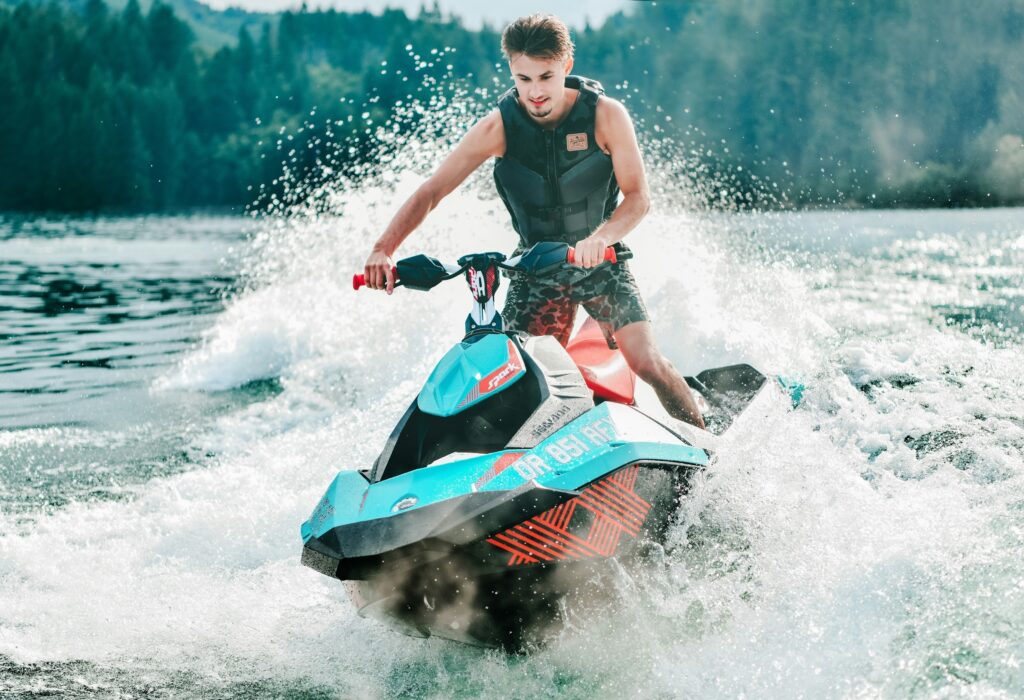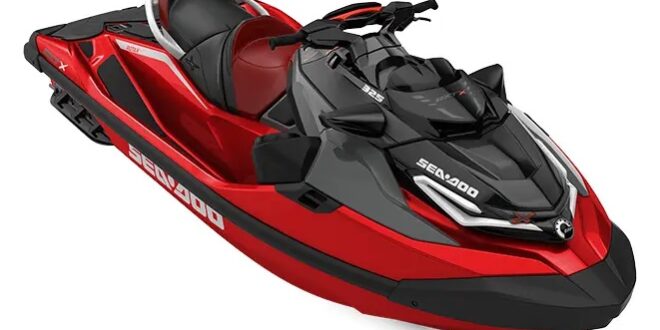Enjoying exhilarating experiences while navigating the large body of water on your Sea-Doo calls for careful maintenance to keep it operating at its best. In this extensive manual, we explore the nuances of Sea-Doo upkeep, explaining each procedure so that any owner can grasp it and put it into practice.
We cover everything, giving you the knowledge you need to maintain your Sea-Doo operating properly for years to come, from the sometimes-overlooked pre-ride inspections to the crucial winterization process.
Come along with us as we reveal the keys to becoming an expert Sea-Doo maintenance technician and opening up a world of water experiences, regardless of your level of riding experience.
Step-by-Step Sea-Doo Maintenance Guide
Explore a step-by-step guide to maintaining your Sea-Doo watercraft, ensuring optimal performance and longevity for your aquatic adventures.
Pre-Ride Check
The most often neglected Sea-Doo maintenance is undoubtedly the pre-ride check, sometimes called the pre-launch procedure. Regretfully, it may result in several issues, including maritime mishaps.
For this reason, you ought to thoroughly inspect your Sea-Doo before using it. The following procedures comprise a considerate pre-ride check:
- Fueling the Sea-Doo properly
- Removing the seat and ventilating the engine compartment to avoid explosions
- Inspecting the hull engine compartment and making sure that the features are working properly
- Checking to see if the engine starts
- Securing the drain plugs to avoid sinking
- Unplugging the trailer
- Making sure the required safety gear, registration certificate, and license are onboard
- And performing any other required maintenance steps described in the manual
After-Ride Care

Like the pre-ride check, your Sea-Doo’s after-ride care is an essential maintenance chore, particularly if you ride it in salt water. On a Sea-Doo, the after-ride care is called post-operating care and consists of the following actions.
- Removing the Sea-Doo from the water after every ride
- Making sure it sits on the trailer properly
- Flushing the exhaust system with fresh water for 2 minutes
- Checking the hull, pump, iBR, and other systems for any damage
- Removing the drain plugs to drain the bilge
- Plugging the trailer
- Removing the wet clothes and accessories and putting it in a shady place to dry
Cleaning and Detailing
Another crucial task to maintain the condition of your Sea-Doo is cleaning. Thorough cleaning is essential to remove the corrosive seawater from the engine, pump, and hull, especially if you ride in salt water.
You may quickly find cracks or other hull damage when washing your Sea-Doo. In addition, you might think about polishing the hull to restore its shine after routine cleaning.
First Service on a Sea-Doo
Generally speaking, a Sea-Doo needs its first service after the first 50 hours or, depending on the model, 6 or 12 months, whichever comes first. This often includes a thorough inspection, a test for fuel system leaks, an oil and filter replacement, and a few additional procedures outlined in the handbook.
Since Sea-Doos have a one-year guarantee, it is advised that you have your dealership handle this initial maintenance, especially if you’ve recently made a purchase Sea-Doo in Canada. As the first 10 hours are known as the “brake-in period,” it is usually advisable to avoid riding your Sea-Doo at full speed.
This means you should utilize a maximum of ½–¾ throttle, but speed changes and rapid accelerations are beneficial.
Winterizing
Even if you reside in a warm region, every Sea-Doo must be ready for long-term storage. This preparation, called winterization, is very important in cold climates since expanding ice may seriously harm the exhaust system and engine.
Oil and Filter Change
In addition to winterizing, your Sea-Doo needs to change its oil and filter after 100 engine hours or a year, whichever comes first.
It is best practice to change the oil and filter at the end of the season as part of the winterization procedure. It’s crucial to drain the old oil from the engine and replace it with new Sea-Doo oil to prevent internal engine rust and malfunctions because the previous oil absorbs water and contains a lot of impurities.
Replacing Spark Plugs
Also, spark plugs must be changed every 200 hours or two years. Never drop the plugs into the holes; always ensure they are installed correctly. Instead, carefully and slowly replace and secure the new plugs using a socket extension.
Simply apply a small amount of lubrication to the threads before installing the new plugs; there’s no need to modify the plug spacing.
Coolant Replacement
Rather than using external water to cool the engine, Sea-Doos have a closed-loop cooling system that uses a unique antifreeze liquid (coolant). This coolant needs to be refilled every three years or 500 engine hours. It also needs to be tested annually.
Supercharger Rebuilding
Speaking of engines, many Sea-Doos require a supercharger rebuild every 100 engine hours or two years, unlike what the general public believes. A Sea-Doo’s supercharger failure could spray metal fragments into the engine, necessitating a total engine repair.
The risk of taking a chance with the supercharger is not worth the thousands of dollars and inconvenience it could cause.
While Sea-Doo has been producing PWCs with “maintenance-free” superchargers since 2017, it is strongly advised that you inspect the supercharger on these models at least once a year or every 50 hours, whichever comes first. Prevention is always preferable to treatment, as they say!
Battery Maintenance
Maintaining the battery is another aspect of Sea-Doo maintenance. Remember to charge the battery if you haven’t used your Sea-Doo for a few weeks. For the winter, you should also take it off, store it correctly, and affix it to a battery tender.
You must also check the water level in a normal flooded-acid battery and refill it as necessary. However, as maintenance-free AGM batteries are considered the best Sea-Doo batteries available, getting one is the wisest course of action.
Master Sea-Doo Maintenance for Endless Water Adventures
In summary, maintaining the longevity and functionality of your watercraft depends on your ability to do Sea-Doo maintenance. Every action counts toward maintaining the best possible condition for your Sea-Doo, from the necessary pre-ride inspections to the careful after-ride maintenance.
This thorough guide streamlines maintenance by emphasizing chores like supercharger rebuilds, spark plug replacements, and oil changes. You can have many hours of safe and thrilling rides on your Sea-Doo for many years if you carefully follow these directions and consult your owner’s manual for instructions specific to your model.
Always remember that proactive maintenance is essential to maximize your enjoyment of your aquatic activities and prevent expensive repairs.
 HammBurg Be informed with latest news, reviews, entertainment, lifestyle tips, and much more.
HammBurg Be informed with latest news, reviews, entertainment, lifestyle tips, and much more.




